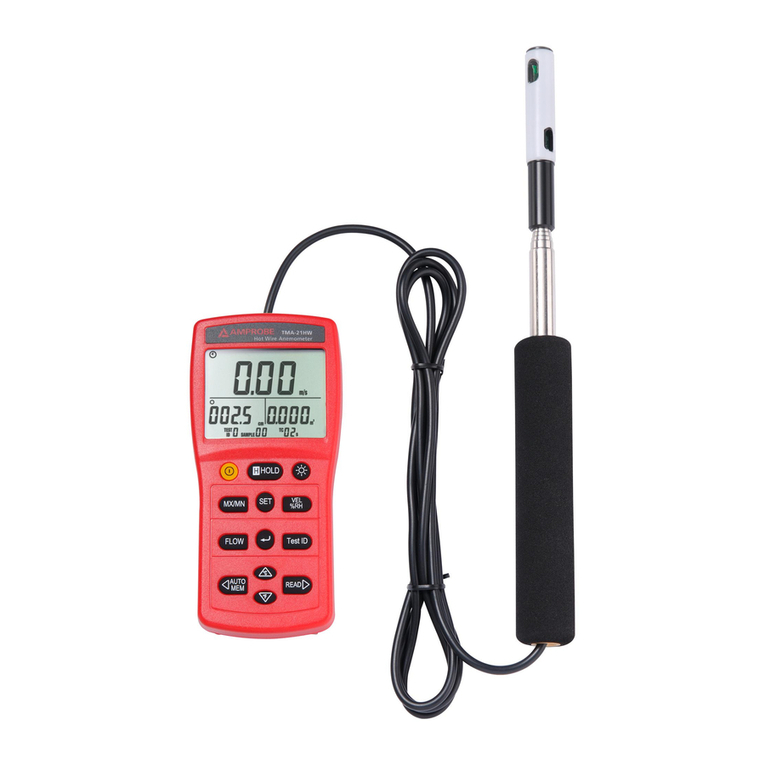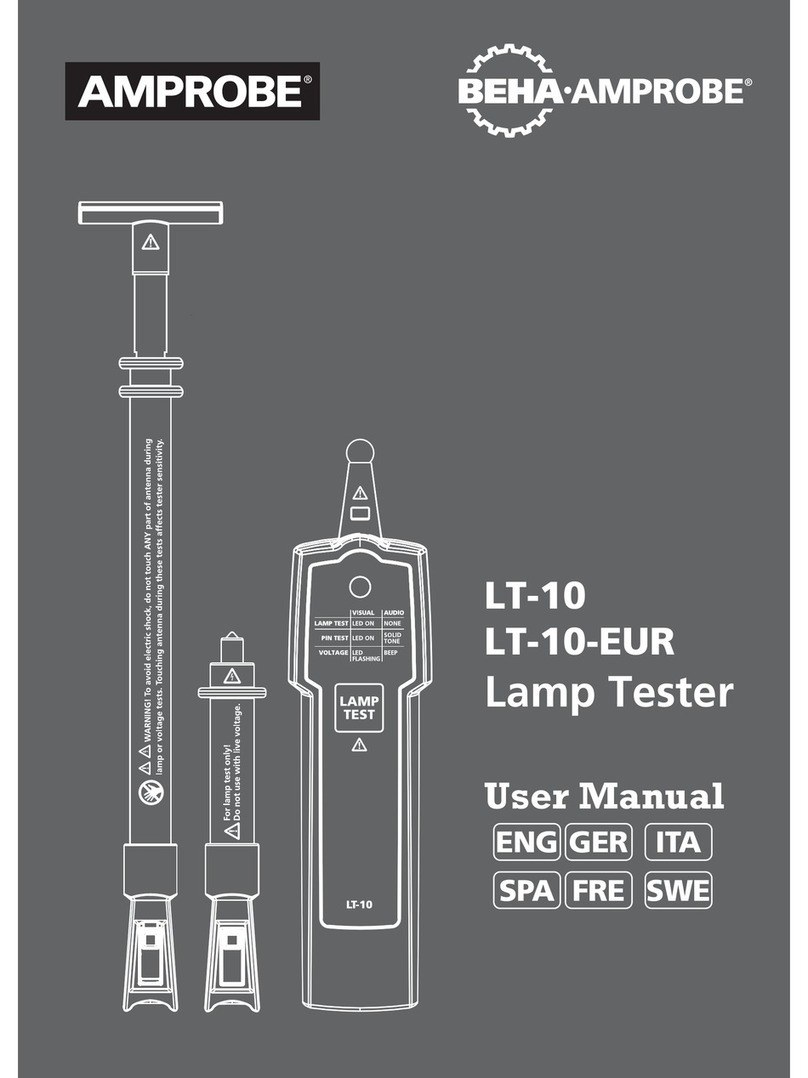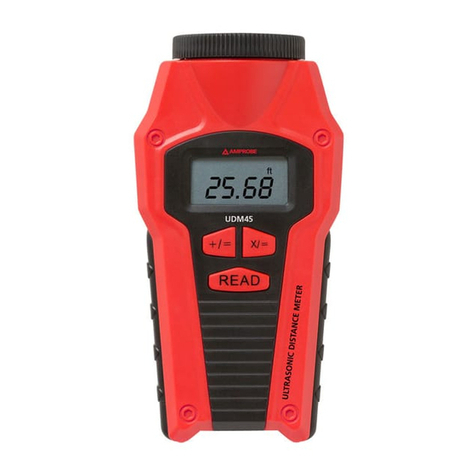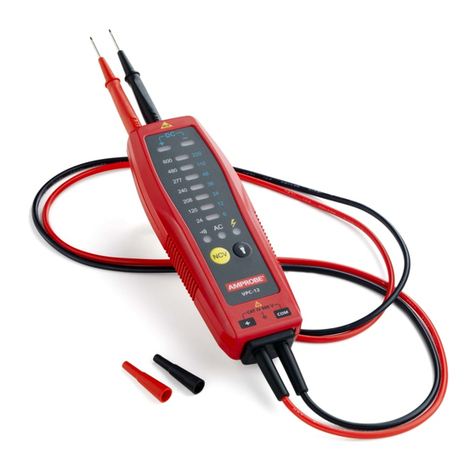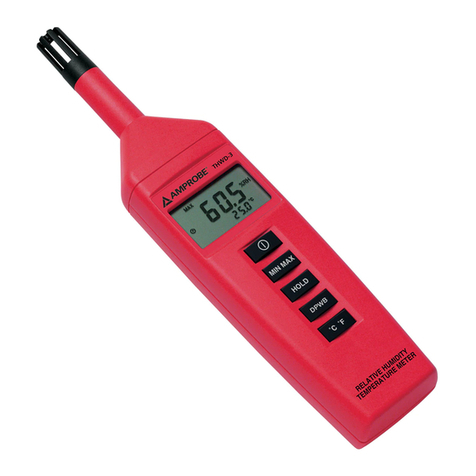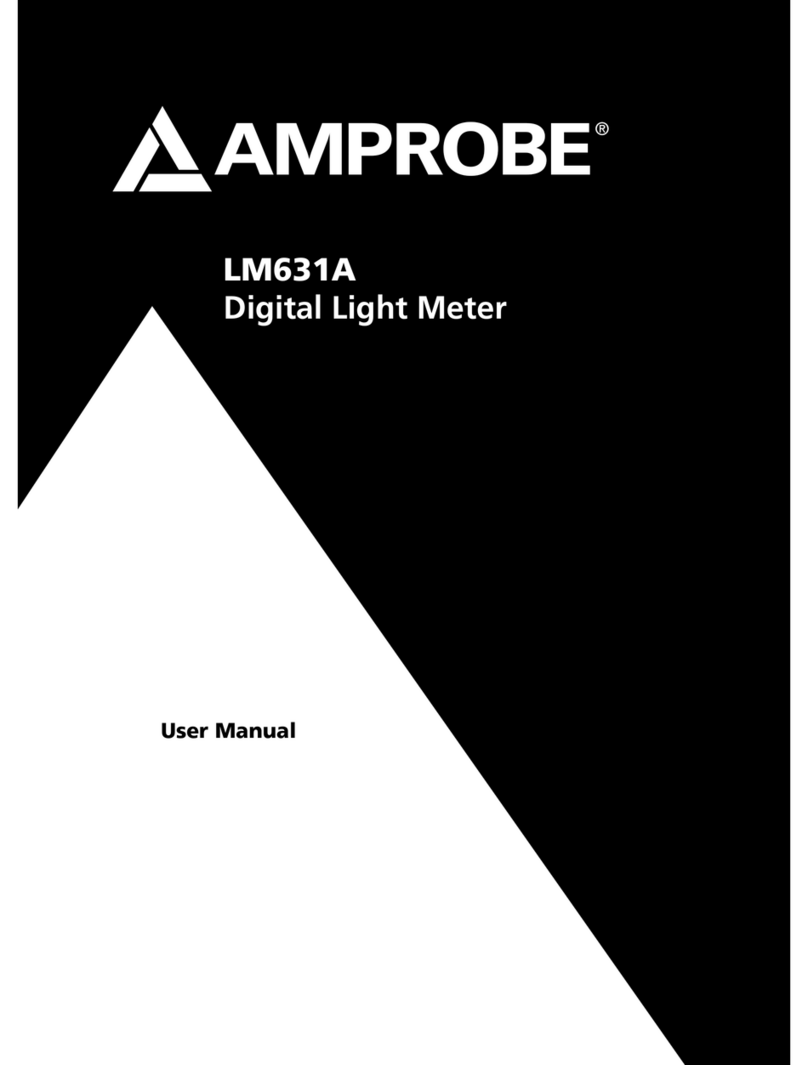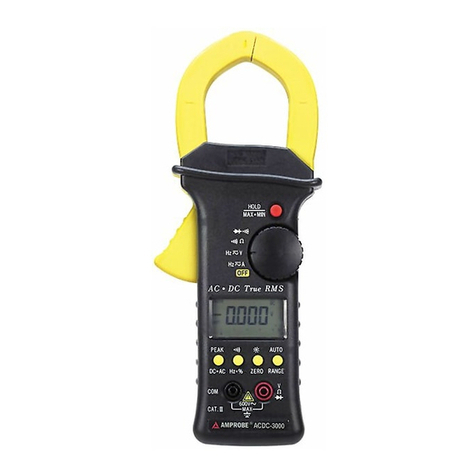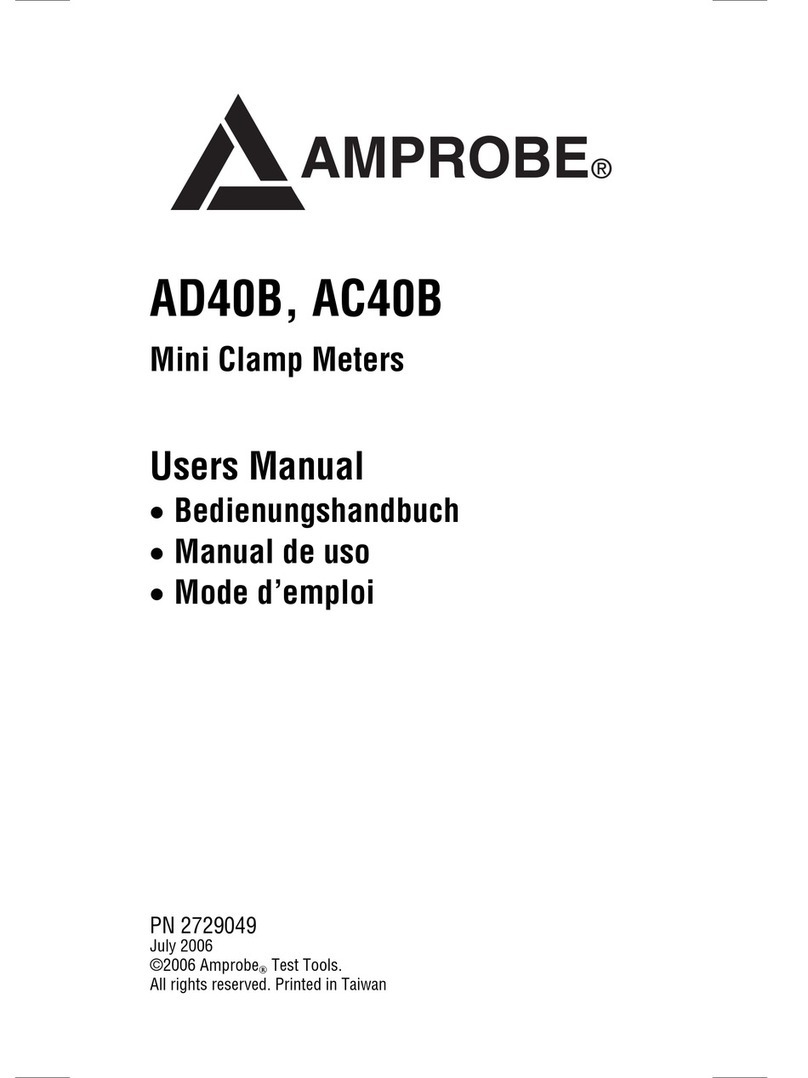7
Adjacent lines which are horizontal to each other Minimum of the reception signal
Lines situated on top of each other vertically Maximum of the reception signal
Direct Coupling (Refer to Fig. 2.)
Connect the red test lead of the T-3500 transmitter with the conductor to be traced1.
Connect the black test lead of the T-3500 transmitter to ground using the grounding rod. Alternatively the black test lead2.
may be clipped to the rim of a valve box or manhole cover.
Switch the T-3500 on3.
Select pulse or continuous signal transmission4.
Switch the R-3500 Receiver on5.
Begin to trace the cable from the point of application about 50-FT (15m) away6.
Move slowly over the cable. Decrease or increase the sensitivity as needed7.
Direct Coupling using the A-3500 Clamp (Refer to Fig. 3.)
Plug the SC-3500 clamp into the T-3500 transmitter connection socket1.
Place the clamp around the pipe or cable2.
Switch the T-3500 transmitter on3.
Set the T-3500 transmitter to pulse or continuous signal transmission4.
Switch the R-3500 Receiver on5.
Select transmitter6.
Begin to trace the cable from the point of application about 15m away7.
Inductive Coupling (Refer to Fig. 4.)
Position the T-3500 transmitter above the presumed cable1.
Switch on the T-3500 transmitter2.
Switch on the R-3500 receiver3.
Select the appropriate mode. Refer to section: Operation:R-35004.
Begin to trace the line from the transmitter at least 15m away.5.
Make sure that a distance of at least 50-FT (15m) is always maintained between the receiver and transmitter in order to6.
prevent the coupling of the transmitter’s signal through the air.
Locating Passive Lines (Radio and Power Modes) (Refer to Fig. 5.)
The R-3500 Receiver can locate passive cables that carry radio signals in the frequency range between 15 kHz and 23 kHz as well
as power signals between the range of 50 Hz and 60 Hz without the help of the T-3500 Transmitter.
Turn the R-3500 Receiver on1.
Select radio mode or power mode. Refer to section 8 OPERATION.2.
Set the sensitivity to maximum3.
Sweep the area using a grid pattern as shown below4.
Adjust the sensitivity to pinpoint the conductor5.
Rotate the R-3500 to find the maximum response6.
Locating unknown cables (Refer to Fig. 6.)
Use the T-3500 Transmitter using the inductive mode.1.
Use the R-3500 Receiver to sweep the area. Keep the receiver 50-FT (15m) apart from the transmitter.2.
Select the desired mode of operation.3.
Adjust the sensitivity of the R-3500 as needed4.
When a conductor is located, pinpoint the strongest signal and mark the location5.
Repeat steps 1 and 2. Move the transmitter at least 3.3-FT (1m) and 90-degree from the initial position.6.
Repeat the process until the right cable is detected.7.
Depth Measurement (Refer to Fig. 7.)
Connect the T-3500 transmitter with the cable or the metallic pipe1.
Turn the T-3500 transmitter on. Use continuous signal mode for better result2.
Turn the R-3500 receiver on and move at least 50-FT (15m) away from the transmitter3.
Rotate the R-3500 receiver until the maximum signal strength is detected4.
Push control15. to take an automatic depth measurement
The measurement will display as follow:6.
To change the unit of measure, refer to R-3500 mode of operation (section 8).7.
For non-metallic pipe, use the M-3000 mouse. Refer to R-3500 receiver mode of operation section 9 to set the receiver8.
accordingly.
